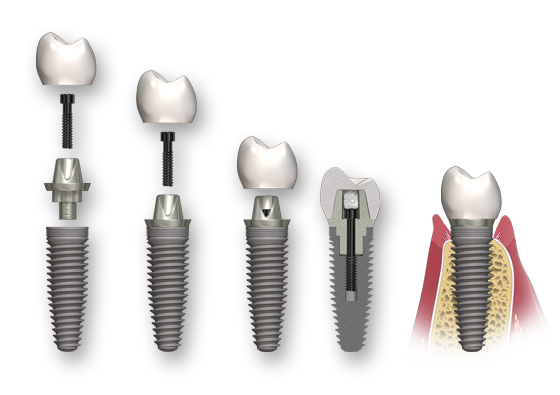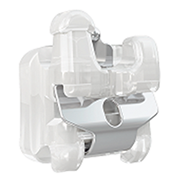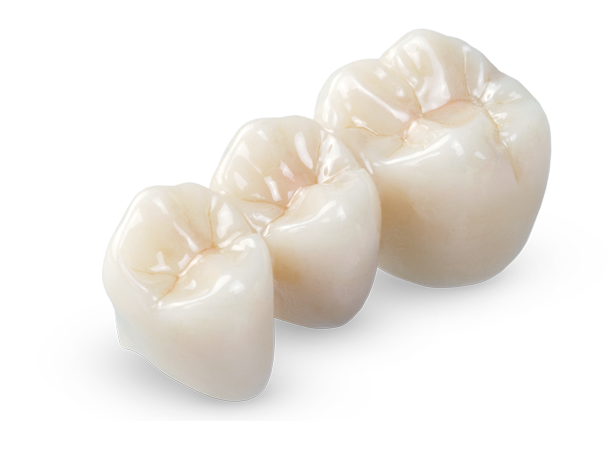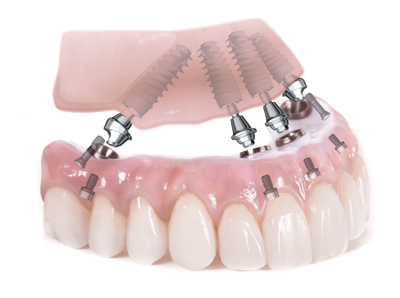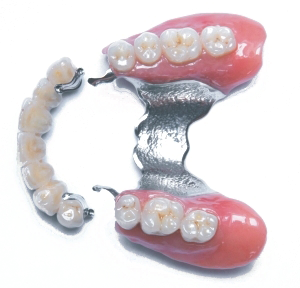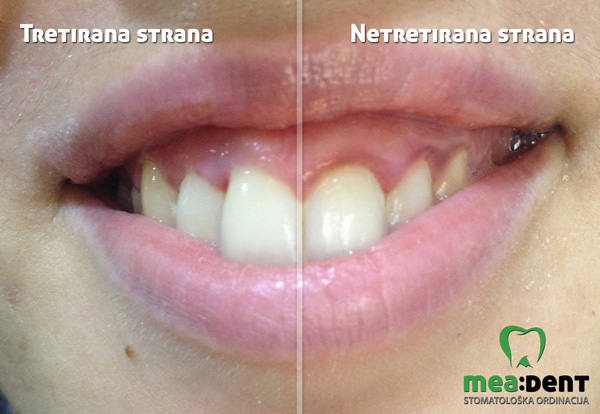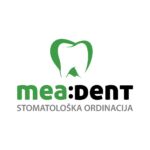PERIODONTOLOGY
Periodontology is the branch of dentistry dealing with treatment of diseases of periodontium and gums caused by excessive bacteria in mouth.
At an early stage of the disease, gums may bleed intensively, they can be dark red, tender and mildly swollen. The disease leads to visible gum recession, destruction of the bone structure around the teeth, the teeth becomes loose and eventually falls out. Apart from that, periodontology is dangerous for health. Diseases of periodontium are tightly connected to other system diseases such as lung disease, heart disease, diabetes…
Parodontopathy is the main cause of teeth loss with adults, but unfortunately it is present with younger population.
In the fight against periodontology the most important thing is preventive, early detection of the disease and regular visits to your dentist!
Removal of plaque (deposits on teeth)
- Removal of plaque (deposits on teeth), which is done by home oral hygiene (toothbrush, floss, mouth wash liquids containing chlorhexidine) and regular visits to dentist prevent development of disease or stop it at an early stage.
Removal of tartar (hard deposits on teeth)
- Removal of tartar (hard deposits on teeth) is one of the most important therapy procedures for stopping further development of a disease and deterioration of periodontium. Tartar presents the biggest etiologic factor of periodontology and thus its regular removal (every 6 months) is of great importance for mitigation of symptoms and stopping of disease advancement.
Curettage of periodontal pockets
• If disease is in the advanced stage, in the space between gums and teeth (gingival sulcus) periodontal pockets and granulations are created, and they could be removed by curettage, which stops their further growth that leads to destruction of a bone and loose teeth.
Surgical treatment
• In the later stages of disease surgery is often necessary. A dentist surgically lifts parts of gingiva, removes the plaque and tartar, and corrects bone defects. If a great loss of bone is discovered during the surgical procedure then synthetic bone is inserted. The surgery is very successful and its long-term effect is maintained by semi-annual control and regular home oral hygiene.
Gingivitis – the first sign of periodontal disease
Gingivitis or inflammation of the gum tissue that bleeds when touched is the first sign of development of the disease.
Periodontal pockets may be formed in the part where gums and teeth meet, where bacteria are accumulated, i.e. deposits are created. This process can be stopped and periodontal tissues can be completely healed. However, it is very important that adequate measures are taken immediately.
Case report
A patient, E.Đ., born in 1984 came because of inflammation of gums that were bleeding when touched by the toothbrush. Condition before and after the therapy.


